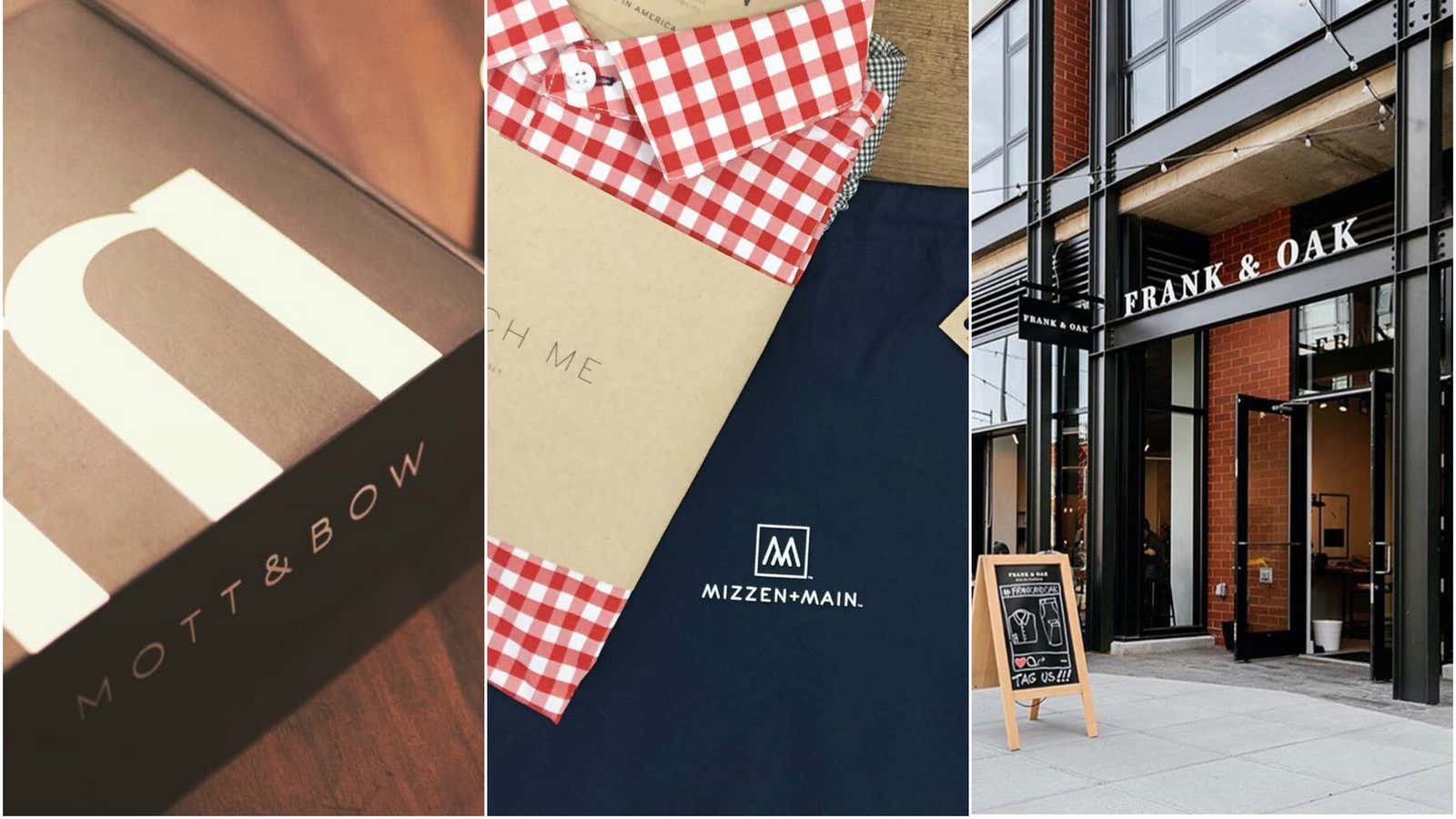It’s practically a fashion trend itself. In the past few years, startup clothing and home goods retailers have taken to a peculiar naming convention: linking two nouns with &, + , as well as the word “and.”
Mott & Bow. Bindle & Keep. Wolf & Shepherd. These are all fairly new clothing or footwear businesses. Add in bedding and you can squeeze Boll & Branch onto the list. Taking a slightly different typographical approach are Frank + Oak, Mizzen + Main, and Whimsy + Row.
Kit and Ace goes with the written “and,” though its logo forgoes the word in favor of a symbol that stands in for an ampersand. It’s the new technical clothing company founded by JJ Wilson—son of Lululemon founder Chip Wilson—and stepmom Shannon Wilson.
That formula of “Name & Name” is so popular that it’s the sole premise of the Hipster Business Name generator. Why is a bit less clear, but according to the brands, there are a few very practical reasons.
“I wanted something instantly unique and memorable that was unlikely to have ever been heard before with a strong sound and atypical set of letters to stand out even more,” said Kevin Lavelle, CEO and founder of Mizzen + Main, which refers to the first two masts on a sailboat. “The + symbol adds just a little extra to the memorability of the name itself.”
“By linking two shorter words, customers have an easier time recalling brand names,” said Scott Tannen, CEO and co-founder of Boll & Branch. “Brand recall is important for all brands, but startups that are working so hard to build awareness in crowded marketplaces perhaps value it even more.”
Practicality of that sort matters for new companies. Noah Simon, a founding partner at Fish, which is a brand and communication strategy firm—and the one that named Quartz—says many companies adopt unusual names and spellings, such as Lyft or Venmo, so that they’re able to get the corresponding URL.
Alejandro Chahin, founder of Mott & Bow, named for the streets Mott and Bowery in New York, acknowledged as much. “[T]he peculiarity of the name allowed us to not worry about conflicting trademarking issues within the clothing class group and made it easier to get the domain name,” he said. Besides, he liked the sound of it.
Some names have more conceptual origins. Wolf & Shepherd comes from the seemingly opposed ideas of comfort and the dress shoe, says founder Justin Schneider. Comfortable dress shoes for men are what the company sells. “Kit” and “Ace,” meanwhile, are the names of the female and male muses that Kit and Ace design for, according to Wilson.
There’s also a nostalgic feel to this construction. “At some point in its early history, I’d guess the germ of that trend was an allusion to the common practice in 17th/18th/19th centuries of naming your company after its principals (e.g. Gieves & Hawkes, Dege & Skinner, Marks & Spencer, etc.),” says Simon. “Could be some of your fashion brands want to allude to handcraft, to pre-industrial or non-industrial processes.”
Take Rag & Bone, the clothing brand that gets its monicker from the old practice of the rag-and-bone man who would collect unwanted household goods and sell them. Many of these companies are focused on very modern products, such as technical clothing, but some say they want their name to have a “classic” feeling.
Of course, if this naming construction eventually renders them undifferentiated in the minds of customers, that’s a problem. While a name has strengths and weaknesses, the company’s actions are more important, says Simon. “The name is an opportunity; you have to use it,” he says.
Smart & true.
